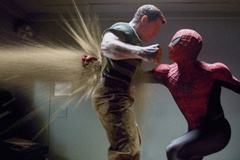Tic, the unfortunate hamster in this video, loses his footing while getting some exercise and gets pulled into the spin cycle, completing nearly 12 revolutions in about four seconds before ignominiously dropping out of the wheel. However, while Tic may be bewildered by what happened during his morning training session, we need not be.
Why does he get pulled into the spin? How does he remain in orbit for 12 rotations before falling off of the wheel? How does he finally escape? These are the questions we will address “for Tic’s sake.”
Once Tic stumbles, his fate is sealed. The friction between the wheel and his furry body provides a tangential force that quickly accelerates him to the rotational speed of the wheel. Once up to speed, Tic has enough inertia in a direction tangent to his circular path that he is pinned to the wheel even when he’s upside down. According to Newton’s First Law, Tic wants to continue to move off in a straight line, but according to the Second Law, a force (or forces) must be accelerating him into his circular path. These forces are acting as centripetal forces, and at the moment when he is at the top of the wheel the centripetal forces are the downward force of his weight (mg) and the downward force of the wheel. Quantitatively:
Fcentripetal = Fwheel + mg = ma = m(v2/r) (v2/r is the centripetal acceleration of a rotating object)
If Fwheel exists, then Tic must be in contact with the wheel. The faster he spins, the more his inertia pushes him into the wheel, the more it pushes back (Newton’s Third Law) and the more he is stuck in his dizzying rotation. However, if the wheel slows sufficiently, the force of the wheel on Tic starts to disappear as he approaches the top. Let’s calculate the minimum speed that keeps Tic in his spin at the top of the circle. This occurs just as Fwheel diminishes to zero. In that case:
mg = m(vmin2/r)
Estimating a wheel radius of about 10 cm, we get vmin = 1.0 m/s. Tic makes 12 revolutions in 4 seconds, giving him an average tangential speed of about 1.9 m/s— well above the minimum. However, the wheel gradually slows due to friction, and by the time Tic hits his twelfth revolution, it slows below vmin and he falls to the bottom of the cage, possibly dizzy, probably nauseous, but otherwise A-okay.



